The 5 ages of History (and their characteristics)
Human beings have been leaving their mark on the world for millions of years. Through the ages we have learned a lot: among many other things we have developed the agriculture and livestock, art and technology, faith, philosophy and science, civilization and culture. Countless peoples, civilizations, empires and systems have been born and disappeared, while many others have evolved to become what they are today. The entire set of events that occurred over time that we have evidence is what we consider history.
But history is not totally uniform: we can distinguish specific time periods within it in which different advances or great changes have taken place. Is about the different ages of history.
- Related article: "History of Psychology: main authors and theories"
The ages of history
We consider history to set of events and events that humanity in general has lived through time that has been on Earth, since writing was invented as a symbolic recording method that allows us to analyze and understand what happened in the past. Although technically before that the human being had already suffered great tribulations and had developed multiple skills, knowledge and techniques, the fact of not being able to know the specific events that they experienced make the period prior to writing be considered as outside the story.
Since the invention of writingThere are countless facts and events that have marked the evolution of history and have changed our world to a great extent. History is vast, and historians have divided it into various ages to make it easier to understand by identifying great moments of change.
There are four great ages in which historians (since Cristóbal Cellarius introduced them) usually divide history, although some subdivisions can be found within them. When assessing the development of the human being, however, the previous time is also often added to what we know as history: prehistory. However, it must be borne in mind that These historical stages are separated from each other mainly on the basis of events that occurred in Europe. Once this is clarified, it should be mentioned that the main ages in history are as follows.
1. Prehistory
As we have said, this stage would not really be part of history since it includes the set of events prior to the invention of writing. But this is a period of great progress, being in fact the longest stage that humanity has lived. The appearance of Homo sapiens, the emergence of oral language, the discovery of fire, the creation of the first tools and the first fixed villages or the passage from hunters / gatherers to farmers / ranchers occurred in this epoch.
This stage is subdivided into the Stone Age (which in turn is divided into Paleolithic, Mesolithic and Neolithic) and Age of the Metals (divided into Copper, Bronze and Iron, although many of the events of this last period already belong to the story).
Possibly the most important milestone of this age is the appearance of the first permanent settlements of human beings, linked to the appearance of the first crops, about 12,000 years ago in the area of Mesopotamia, Anatolia and the eastern Zagros Mountains. These settlements were made up of people who left hunter-gatherer lives behind and began to live off the accumulation of agricultural surpluses. This allowed the members of these small populations to specialize in tasks that others did not know how to do, giving rise to more elaborate and specialized goods.
Over time, these populations were gaining capacity to host people, and soon temples began to emerge, many times associated with the centralized management of agricultural surpluses (part of the harvest was given in sacrifices).
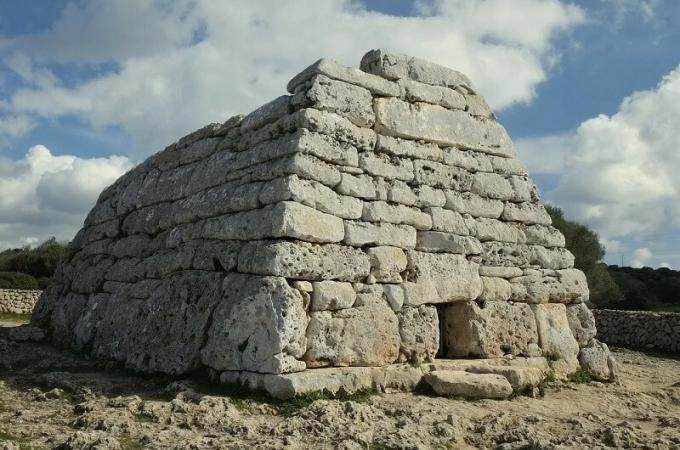
- Related article: "The 6 stages of Prehistory"
2. Old age
The first of the ages in history, the Old Age begins with the invention of writing (which is roughly considered to have arisen between 3500 and 3000 BC. C.). The Ancient Age would then begin at a time between the previously mentioned Bronze and Iron ages. Its completion is approximately 476 AD. C., with the fall of the Western Roman Empire.
This stage is characterized by being the longest in history, and part of the events that occurred in it have been lost. It is in the Ancient Age in which the human being mostly abandons nomadism and becomes sedentaryThis age being the time when great civilizations such as the Greek, the Egyptian, the Mesopotamian, the Persian and the Roman arose. This stage is also famous for the high prevalence of battles and wars, slavery and the emergence of various political systems and concepts such as democracy or dictatorship.
At the European level, the presence of a large number of peoples and traditions stands out that little by little were invaded and were losing as they were being agglutinated by the Roman Empire, which expanded through Europe and part of Asia and Africa.
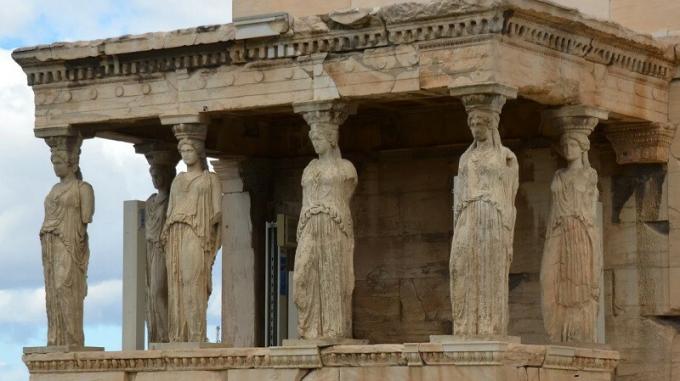
On the other hand, this stage of history is the one in which great advances were made in the knowledge of the human being, being the period in which the classical stage of philosophy appears (from which all the sciences will later depart). Different belief and value systems were generated. At the level of religion, the different cultures held generally polytheistic beliefs. Also in it arose some of the main current religious beliefs, both polytheistic (such as Hinduism), and monotheistic (Judaism and Christianity).
Within the Ancient Age, two stages can be distinguished: classical antiquity and late antiquity.
Classical antiquity
Classical antiquity is called the period characterized by the expansion of Greek and Roman civilizations, technically from the 5th to the 2nd century BC. At this stage we observe the emergence of both civilizations, the Empire of Alexander the Great, the medical wars, the emergence of democracy, the Roman republic and its expansion through Italy, the creation and expansion of the Roman Empire and the beginning of its decline.
Late antiquity
Late antiquity would go from the 2nd century BC. C to 476 d. C., corresponding to the stage of decline of the Roman Empire and the transition from slavery to feudalism. At this stage, Rome and her empire began to suffer more and more frequent uprisings (highlights the starring Spartacus) and is invaded by the Germanic peoples (as happened in the peninsula Iberian).
One of the best known invasions was that of Attila the Hun.. Also relevant is the emergence and expansion of Christianity as the official religion of the Empire, which would later become the dominant religion in the European territory. Late Antiquity would technically end in AD 476. C., with the fall of the Roman Empire.
3. Middle Ages
This stage is curiously linked to the fate of the Roman Empire, since it originates with the fall of the Western Roman Empire (in 476 AD. C. Y ends with the fall to the Ottomans of the Byzantine Empire (the Eastern Roman Empire) in 1453. However, other historians consider that its completion corresponds more to the arrival of Columbus in America in 1492.
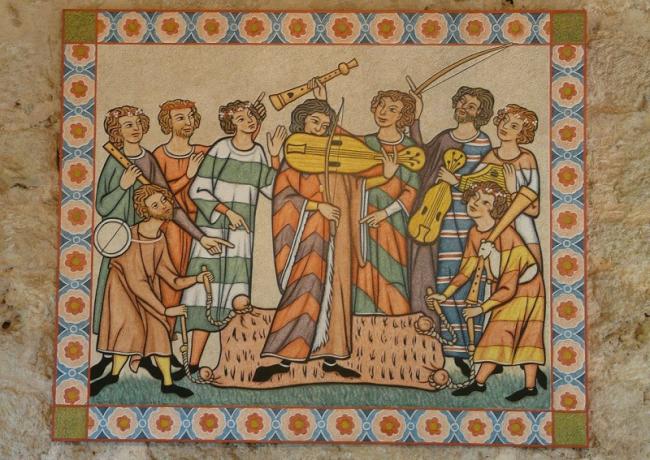
After the fall of the Roman Empire, which centralized power, different kingdoms and civilizations arose, establishing different peoples and nations in the ethnic sense. Feudalism appears as a political system, in which the lords ruled their lands while obeying the figure of the king. The monarchs could reign over peoples and ethnic groups very different from each other, and power relations established that all the individuals of these were due to their king, regardless of their language, their race or their estate.
During this stage, the expansion and dominance of Christianity as the predominant religion in Europe was observed, and Islam was also born in Arabia as a religion.
Likewise, it is during this time that the bourgeoisie appears as a social class, although the technological development of this time did not yet allow much wealth to accumulate (something that will happen after the industrial revolutions, more go ahead).
The economy is divided between the African sphere and the urban sphere, in which the most important figures are the merchants and the crafts and manual manufacture of goods guilds. However, in most places the cities are still small, and the population lives either dispersed, or in small urban centers, where almost all important sites are within walking distance.
War conflicts framed or justified by religious differences are frequent, being the time of the Crusades and different religious persecutions. Different groups and sects appear, many of which are considered heresies and eliminated. The figure of the Inquisition also appears, the acts of faith and the burning of witches.
This historical period can be divided into two stages: High Middle Ages and Low Middle Ages. Although sometimes an intermediate stage is added, the Feudal Age.
High Middle Ages
The High Middle Ages is considered to be the period of time between the 5th and 10th centuries. It supposes a period of time in which different empires and civilizations fought each other, after the Roman Empire fell. Vikings, Hungarians, Muslims, Byzantines and Carolingian Empire they were some of the most relevant at the European level.
The population lived mainly in the countryside, and was divided into nobles and commoners. The class differences are very noticeable, the nobility having all the rights and the commoners practically none. Feudalism arises and constant warlike conflicts arise from the control of lands and manors. The culture is very mediated by the Church and the Inquisition arises.
Middle Ages
The final stage of the Middle Ages, the Late Middle Ages corresponds to the period of time between the 11th century and the fall of Constantinople to Turks in 1453 (or the discovery of America in 1492, depending on where the limit).
This stage supposes a general economic resurgence, appearing the bourgeoisie and beginning the population to focus on the cities. The number of armed conflicts decreases and the population begins to increase. The mill is invented and the first rights begin to appear for the peasants and bourgeoisieThe latter working in exchange for remuneration and not for servitude. During the fourteenth century, feudalism went into decline and dissolved. It also diminishes the power of the Church, although it continues to have great influence.
Another great event of great importance is the appearance of the Black Death epidemic, the largest epidemic of which there is evidence and that it killed between a third and a half of the population of the epoch.
4. Modern age
The fall of Constantinople in 1453 or the arrival of Columbus in America in 1492 are the two main starting points of the so-called Modern Age. The end of this age is situated in 1789, specifically the day of the storming of Bastille that begins the French Revolution.
During this stage absolutism appears, in which kings concentrated political power. The end of this form of government would also lead to the end of the Modern Age, with the French Revolution. Other events of great relevance were the aforementioned discovery of America (and its subsequent invasion) and its colonization by various countries. Expansionism abounds, in a stage marked by the colonization of what are considered new territories. However, as the centuries passed, uprisings that culminated in the American Revolution and the War of Independence of the United States and multiple colonies ended up. Slavery is abolished.
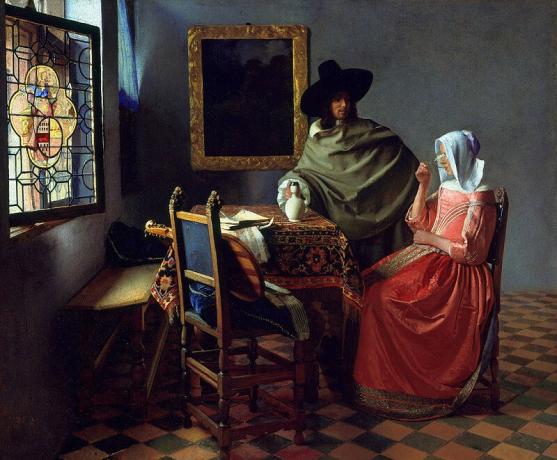
Culturally, highlights the rise of the Enlightenment, a cultural movement that transformed the intellectual life of the time: God stopped being the nucleus of intellectual interest to focus on the figure of the human being. It was a time when great scientific and social advances took place, with the appearance of the steam engine or the first vaccines. There were also political and religious changes, as well as major conflicts linked to these changes, such as those produced on the basis of the Lutheran reform and the counter-reform. Likewise, it was during this time that the Spanish Golden Age passed, the Spanish Empire being one of the most powerful of the time.
The completion of this stage occurs with the French Revolution, a historical milestone of great importance in which absolutism was abolished. This stage and its end are characterized by the appearance and subsequent persistence of the values of Western society.
5. Contemporary age
The last of the ages that is contemplated in history, includes all the events that occurred from the French Revolution to the present. There are many known milestones of this stage. The French Revolution itself, the advancement of technology until it reached the so-called Industrial Revolution, the First World War, the emergence of fascism and World War II are some of the best known events facts.
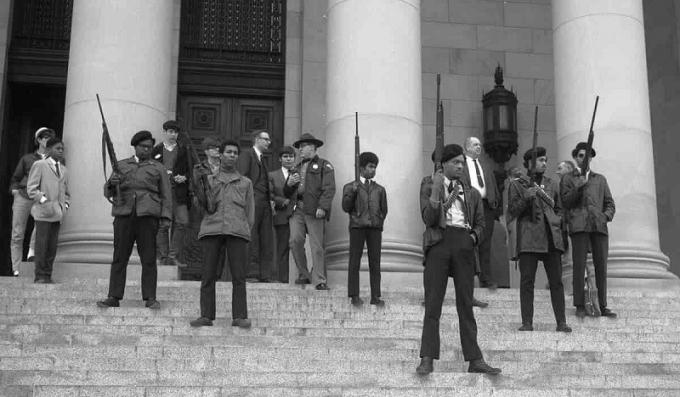
In addition to this we can observe the evolution of the rights, duties and freedoms of citizens and of the different social groups. The fight for the eradication of social classes, for the rights and equality of women, of different races and sexual orientations are other milestones that have been achieved or are in the process of being achieved during this stage.
There continues to be great social inequality, although traditional social classes lose part of their validity: power begins to be shared between the aristocracy and the bourgeoisie, and the latter monopolizes more and more resources through the accumulation of capital. The bourgeoisie is established as the ruling class and the middle class appears. However it still exists (still today) social classism, although this time it is more linked to economic capacity and not to the social stratum of birth.
On the other hand, nation-states are configured through bourgeois revolutions, in which the idea that the sovereign is the monarch is put to an end. This consolidates national sovereignty in many countries, and the meaning of the term "nation" passes to be very specific, being associated with the "demos" of each country: Italians, French, Spanish, Americans ...
Namely, the idea arises that it is the population that should exercise sovereignty, under the idea of equality and respect for the laws (which must be applied to all people). Except for the exceptions of the territories in the process of decolonization, it is understood that the sovereign entity is no longer embodied by the king, but by all the citizens of each nation equally. Throughout the twentieth century, this principle will give shape to the concept of "rule of law", from which it is established that even state governments must behave in accordance with the law current.
In addition, the great economic systems still in force appear, capitalism and communism, which come to confront each other in numerous historical moments such as during the Cold War. The ideologies derived from both configure what is known as the welfare state, based on the idea that states They must combine respect for individual freedoms with the ability to satisfy the basic needs of the population.
Also science has evolved to a great extent, improving the living conditions of most of the western population. Medicine advances until previously deadly diseases can be controlled and even eradicated, if they are discovered or reconceptualize new diseases (such as AIDS), Man engages in space exploration, reaching the Moon and seeking to go further her. Computer science has recently appeared, and eventually the Internet (some authors opine that this milestone could be considered a change towards another new age).
